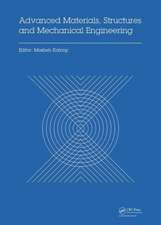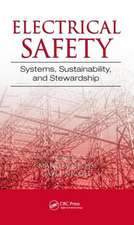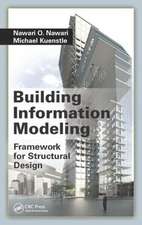Civil Engineering Systems Analysis
Autor Luis Amador-Jimenezen Limba Engleză Paperback – 24 aug 2016
The applications deal with some of the challenges that civil engineers will typically encounter during their professional lives, ranging from municipal planning and infrastructure management to transportation analysis.
The treatment of the topics is integral. Tools and examples from real life situations are combined to illustrate the use of methods and principles. Students will learn to understand a system, conceptualize a model, analyse it and make decisions or draw conclusions, just as practising engineers do. A final chapter introduces methods for expanding simple models, adding complexity and incorporating uncertainty.
Instructors can chose to cover some of the material from the foundation chapters on mathematics and statistics or directly concentrate on the tools and applications.
Preț: 458.59 lei
Preț vechi: 539.51 lei
-15% Nou
Puncte Express: 688
Preț estimativ în valută:
87.76€ • 95.30$ • 73.72£
87.76€ • 95.30$ • 73.72£
Carte tipărită la comandă
Livrare economică 22 aprilie-06 mai
Preluare comenzi: 021 569.72.76
Specificații
ISBN-13: 9781482260793
ISBN-10: 1482260794
Pagini: 272
Ilustrații: 146
Dimensiuni: 156 x 234 x 25 mm
Greutate: 0.39 kg
Ediția:1
Editura: CRC Press
Colecția CRC Press
ISBN-10: 1482260794
Pagini: 272
Ilustrații: 146
Dimensiuni: 156 x 234 x 25 mm
Greutate: 0.39 kg
Ediția:1
Editura: CRC Press
Colecția CRC Press
Cuprins
Tools. Introduction to modeling. Mathematical Analysis. Optimization and Simulation. Probability and Statistics. Estimation and Prediction. Economic theory for Land Use and Transport modeling. Applications. Transportation and Municipal Engineering. Civil Infrastructure Management. Decision making and uncertainty.
Recenzii
"A timely and thoughtful presentation of engineering concepts as related to systems engineering."
—Samuel Labi, Purdue University
—Samuel Labi, Purdue University
Descriere
This textbook covers tools and a selection of applications in civil engineering systems. It begins by reviewing the mathematical and statistical background for the adequate formulation of civil engineering problems. Then it reviews a series of economic theory topics required to understand current and future demand for infrastructure (i.e. housing, facilities and transportation networks) and its maintenance, improvement and expansion. The book covers problem definition, model formulation and decision making systems, including optimization, estimation and prediction.














